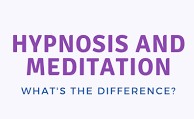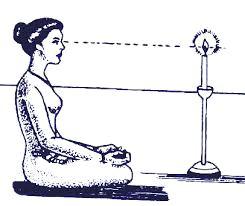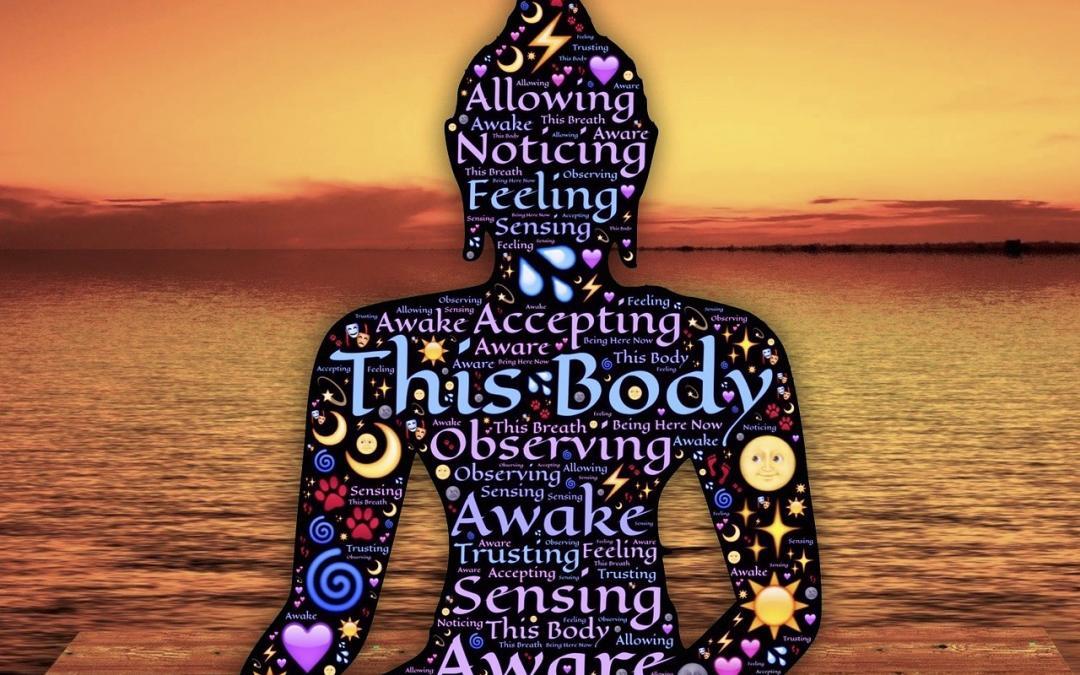
by Yoga In Nepal | Sep 17, 2020 | Meditation
Hypnotic Meditation
The process of clearing the mind to achieve a state of relaxed and focus with extreme self-focus and attention giving minimum attention to external stimuli is known as hypnotic meditation. In simpler words, hypnotic meditation is a deep relaxation process through the state of consciousness where a person loses the power of voluntary actions and is highly responsive to suggestion or direction.
Hypnosis is a natural state of mind that we all experience daily. Apart from meditation, the hypnosis technique is used to draw important information from people like criminals, officers, etc. Hypnotic meditation is simply another name of guided meditation. Among various meditations that are just guided visualization, relaxing process to drive you to an imaginary journey, hypnotic meditation is one of them.
Hypnosis Vs meditation
Meditation is a step to enter a hypnotic state. Meditation reduces activity in the brain while hypnosis increases brain activities. Hypnosis and meditation are figuratively vast conceptual colleges of imprecise multiple meanings and observations. According to theorists of human consciousness, both hypnosis and meditation are secondary phenomena: in the sense that both of them are culturally defined shaped modes of thoughts, behaviours, and experiences.
Hypnosis always needs a therapist but mediation can be done alone without any instructions. Hypnosis and meditation are duels without a clear winner. The next reason why they are considered the same is they both are shrouded in myths. People still believe that hypnosis is all about making people hypnotized and make them dance like chicken and ninja. However, they all are false.
Is hypnotic meditation safe and legal?
Hypnotic meditation is legal when it is conducted in clinics or certified centers with proper guidance and support. Hypnosis conducted by a trained therapist or health care professionals is considered safe. They are complementary and alternative methods of medical treatment. However, it may not be safe for people with mental illness.
Some people may get side effects of hypnotic meditation like headache, drowsiness, dizziness, anxiety, etc. With proper caution, hypnosis is proposed as a method to work through stressful events from earlier in life. Only trained professionals and health care therapists can perform this task for us.
You do not need any type of special preparation to be a part of hypnosis. Make sure you wear comfortable breathable cloth that will help you to relax. Choose a therapist or professionals who are certified, hypnosis performers. Seek recommendations and advice from people and only choose trustworthy people.
Your therapist will explain all the process of hypnosis to you. Then the therapist will typically start to talk in a gentle and soothing tone describing situations and images to create a sense of relaxation and security. When you are in a receptive state, the therapist will suggest you the way to achieve your goals and helps to visualize vivid, meaningful mental images of yourself accomplishing the goals.
Benefits of hypnotic meditation
- The hypnotic state is characterized by relaxation and a lack of inhibitions.
- This meditation will offer the person to be more open to discussions and suggestions.
- It helps to manage depression and stress.
- Hypnotherapy is also used to help with pain control and to overcome habits such as smoking or any addiction.
- It is also very beneficial to reduce disorders, phobia, fears, and anxiety.
Risks of hypnosis
It is used to recover repressed memories but it may also pose a risk of creating false memories. Using hypnotherapy for disassociative disorders remains controversial. It may not be appropriate for a person with psychotic symptoms, such as hallucinations and delusions.

by Yoga In Nepal | Sep 13, 2020 | Meditation
Candle Gaze Meditation- Introduction
Candle gaze meditation is an open eye meditation where you stare at flame of the candle without blinking or letting your eyes water. Candle gazing is different from other types of meditation because most of the mediation is done by closing our eyes focusing attention inward.
However, candle gazing is a different type of meditation where you keep your eyes open and focus on an external object. Candle gaze meditation is also known as trataka, which helps to bring energy to the third eye, increase concentration and memory. It is considered a type of hatha yoga, which helps with spiritual advancements. It helps to challenge our thoughts and focus our mind.
When you gaze at a candle, your gazing should only be focused on flame of the candle. This allows your mind to fully focus on the candle on candle gaze meditation and everything in the room faces for you. At the same time, an invasive thought or distractions also fades away. This helps us to keep our mind to zero and remove all the negative thoughts from our mind.
How to perform candle gazing meditation?
Same to other meditation, choose peaceful and dark space where you will not be disturbed by external affairs. Choose a dim light more than bright and close the curtains if it’s daytime. Remove all the distractions like food, gadgets, etc. Place candle at a level and wear comfortable clothes.
Sit in cushion so candle flame is at eye level and about 2 feet away. Sir straight in a comfortable position. Breathe and gaze continuously at candle. Focus on the sensation of light and inhale the positive energy. When you are done with meditation, lay down and close your eyes for a certain time. This will allow human system to get back into awareness.
Significance of candle gazing and candle gaze meditation
The colour of candle also indicates so many things. Every colour of candle holds different quality. White colour holds purity and innocence, gold holds prosperity and wealth, violet and indigo holds commitment and imagination respectively.
Similarly, blue holds creativity, turquoise holds independence and green holds forgiveness and freedom. Yellow colour candle is for ambition and power whereas orange is for sensuality and sexual energy. Red and pink holds the quality of courage and empathy respectively.
Tips for candle gazing meditation
The benefits of candle gazing meditation will enhance if we follow certain tips and rules.
- It is better to practice this meditation on an empty stomach during early morning hours or evening hours before going to bed.
- Choose a decent sized flame by adjusting the wick size. It is to achieve a better after-image of the flame and to visualize with proper concentration.
- You do not need to adjust your eyes. The brain will slowly help you to adjust your eyes while gazing on the flame.
- The mediation will be better with a soothing classic music or aum dhun.
Benefits of candle gazing
From opening our third eye to improved eyesight and many more , this simple meditation technique can beautifully amend our body. The benefits of candle gaze meditation are listed below:
- It improves concentration, memory and intelligence.
- It enhances self-confidence and power.
- It calms the mind and provides inner peace.
- It helps to overcome mental, behavioral and emotional aliments.
- It deepens our sleep and cures sleep-related disorders.
- It cleanse the etheric body.
- It strengthens intuition and clairvoyance.
- It also improves eyesight and vision.
Precaution: You need to take care of your eye while doing this. If you do on wrong way it might gives the problem in your eye sight. To protect your eye you may see the ayurvedic way of eye care daily.
Unlike other mediation, candle gaze meditation is all about sensing the flame of candle with open eyes and to focus your mind at a particular thing only. It is a powerful practice that you can easily incorporate into your routine and enjoy its benefits.

by Yoga In Nepal | Sep 5, 2020 | Meditation
Sound Meditation
When we speak of meditation, we normally have a picture of a monk/sage sitting in a lotus position. There is a certain calm and peace in his face that we all want to have. Sound meditation is a relatively new method of meditation which on the contrary, has been around for quite some time. Through this blog, we shall learn more about it and how we can benefit from it.
What is sound meditation?
Sound meditation refers to a healing practice that not only heals the body but provides inner peace and relaxation. While other meditation techniques emphasize on silence, in this meditation, we prioritize on the reverberating sound. It revolves around the idea that sound has healing properties and we can access it through concentration and practice.
As the years progressed, the methods of sound meditation have seen rapid development. However, the core idea and philosophies remain the same. Also, modern yoga practitioners believe that sound can heal and spiritualize us. In recent times, people practice this meditation by hearing the sound of various objects.
Brief History
Different countries have their origins of sound meditation. For instance, ancient Greeks used to treat mental problems with the help of songs. The Greeks worshipped ‘Apollo’ who was the God of medicine and music. They believed that music had healing properties and it could treat the ill.
Another instance where sound meditation is seen is on the Aboriginal people in Australia. They used an instrument called ‘didgeridoo’ as a healing tool. Furthermore, the use of such practice dates back to more than 30,000 years ago. Even in countries like China and Bhutan, we can see people still using the healing properties of the meditation.
Does sound meditation help us?
In a world where people rely on physical proof, some people question the authenticity of this meditation. Various studies have shown that listening to music boosts our productivity. Also, it acts as a stress reliever. Likewise, music floods the brain with dopamine which releases oxytocin (a natural painkiller). The same concept is applicable in this meditation too. It can not only alter our minds but our bodies as well.
What are the effects of sound meditation?
It brings numerous benefits to the body. It helps in curing diseases/ailments. It does not mean that only sick people should practice sound meditation. Even healthy people can take it and gain benefits. The benefits are:
- Relaxed mood
- Mental clarity and balance
- Aids in fighting insomnia
- Enhanced immune system
- An increase in creativity
- Strong memory power
- Strong concentration levels
The ailments where sound meditation works wonders are:
- Anxiety
- Depression
- Stress
- Post-traumatic stress disorder
- Learning problems
What is a sound meditation session like?
In a sound meditation session, you sit in a comfortable position. In most cases, you just lie down. You make the body ready to receive sound and commence the healing process. Some tools that people use in this meditation are tuning forks, singing bowls, and drums. Some people use their voices too.
Different types of sound meditation
There are various methods of meditation using sond and depending on where you decide to go, the treatment may vary.
Dalcroze method
This method teaches music to children as a form of therapy. It emphasizes the rhythm, expression, and learning from it. It provides a better grasp of our motor functions.
Neurologic music therapy
In this meditation method, we use music as a tool to alter the brainwave of a person.
Singing bowl therapy
This is an ancient method of healing through sound. It dates back to 12th century Asia and was prevalent in rituals. Nowadays, people use it to calm the mind and repair it.
There is more to sound meditation that meets the eye. Before you practice it, you need to conduct some research and take support where necessary.

by Yoga In Nepal | Aug 31, 2020 | Meditation
Trataka meditation- Introduction
Have you ever sat on a still position and concentrated on a single point of light for a long period in a row? Such practice of focusing on a single point of light for a longer period is called ‘concentrated gazing’. In a spiritual language, such practice is called ‘Tratak’. In the yogic culture, Trataka meditation is considered as a good deed or popularly known as shatkarmas, or ‘six actions’ which is widely used to purify the human soul.
Tratak is believed to be in practice for nearly thousands of years now. In the past, yogis used to calm their chattering and meandering mind by performing tratak meditation. Likewise, the instant medical benefits of tratak meditation include strengthening the muscles of the eyes and correcting your vision, cleansing your negativity, and focusing on the single point or the thoughts for a longer period. The ultimate goal of performing tratak meditation is to get liberation or in spiritual term moksha.

Types of Trataka Meditaiton
There are different types of tratak and among them, the widely used tratak are illustrated below:
- Bindu Trataka Meditation: A widely practiced tratak where a single point of the black dot is focused for the longer period.
- Murti Trataka: A bit different form than that of Bindu tratak meditation, here murti or popularly known as an idol is focused for a longer period.
- Vartul Trataka: In this form of tratak all focus is given on a circle.
- Allay Trataka: In allay tratak all the practitioner focus on a spiral ring to concentrate.
- Jyoti Trataka Meditation: In Jyoti tratak a flame of light is focused for a longer period. Continuous focus is made to make oneself stronger.
- Surya Tratak: This tratak is practiced either in the early sunrise or before the sunset. It is generally recommended to practice Surya tratak under the guidance of experts.
- Trinetra Tratak: While practicing Trinetra Tratak focus is given to the third eye of own self.
More Specific Classificatoin of Trataka Meditation Techniques
There are two types of gazing practice, namely, they are external (bahiranga) and internal (antaranga).
External Trataka Meditation
External tratak meditation is usually practiced by gazing continuously at the single point for a longer period. For the beginners, gazing at a single point is a good practice. You can take some reference of object like moon gazing, aum symbol gazing, crystal gazing, candle gazing etc. All above mention trataka belongs to the external trataka. You can practice anyone.
Antaranga trataka Meditation
While practicing antaranga tratak, both eyes are kept closed and concentrated on a symbol, or a point of light is imagined and concentrated for a longer period. Visualization is carried out while practicing Antaranga tratak, a single point is focused continuously without thinking any other thing. It is advised to see the object clearly and steadily in the dark space of chidakasha, for a longer period without any sort of disturbance. Both meditation techniques of trataka are very effective.
The perquisites of doing antaranga tratak are not only the vision of eyes get clear, but also the blurry thoughts are obliterated and the clear and crystal way of thinking emerges out. Antaranga can be done any time the practitioners want to; however, it is most often advised to practice on an empty stomach during the morning time.
NOTE: We can take the chakra system visualization as an internal trataka meditation. Here we visualize the colors of 7 different chakras one by one.
Details of Internal Trataka Meditation for 7 different chakras
8. Root chakra internal trataka
As the name signifies the root, chakra lies at the base of the spine, which is also known as a caudal bone. The root chakra is reddish in color. The significance of root can be compared with feeling aplomb, safety, and safe. In plants, the main function of the root is to draw the necessary nutrients, analogous to that the main significance of the root chakra in humans is also to draw power, wealth and show your wants and needs.
In this tratak Meditation we visualize the color of the root chakra, visualize its going to be pure, all the blockage is removing and you are going to be more and more powerful. Similarly, we do for the other chakras too.
9. Sacral chakra Internal trataka
The second chakra, which comes from bottom to top, is the sacral chakra, which is orange in color. To be precise, the chakra is located just below the belly button. The sacral chakra signifies the control of your emotions, your reactions to the outer world stimulus, and the health condition of your whole body.
10. Solar plexus chakra
The yellowish colored solar plexus chakra masters your emotions, energy, power, and self-esteem. The precise location of solar plexus is between naval and sternum.
11. Heart chakra
The heart chakra is greenish in color and lies at the center of your chest. As the heart signifies the power to give and accept empathy, love, compassion, so is the heart chakra responsible to.
12. Throat chakra
The color of the throat chakra is blueish. The throat chakra is mainly responsible to show your feelings through your voice and your write up. Those, whose throat chakra is unclogged, can express their feelings with ease.
13. Third-eye chakra
The color of the third-eye chakra is purple and indigo. It is difficult to open the third eye of a person; therefore, most people consider third-eye chakra as mystical. The position of third eye chakra in the center of the forehead between the eyebrows.
14. Crown chakra
Another mystical chakra is crown chakra; it is responsible to connect the human energy with the supreme source of energy. The divinity is achieved if the crown chakra is opened.

by Yoga In Nepal | Aug 26, 2020 | Meditation
10 Less Popular Meditation Techniques which people practice rarely
Despite the hype, meditation is getting nowadays; there is much criticism that has been labeled against meditation as being coercive, top-down, heavy-handed, and not impartial. There are various types of mediation are available to disputants who are seeking meditation for an effective resolution to their conflict. In this article we will discuss about 10 less popular meditation techniques.
Among various types of meditation, some may fit people’s expectations and some may not. So a label of popular and less popular is stamped in the meditation. Some might be popular, while other are less popular meditation styles. There are so many types of meditation that can be an effective alternative to have a court battle but they are not recommended and practiced, as they are not getting hype.
Besides, this is the reason why they are not getting good results from their meditation. Practicing the wrong kind of meditation judging it only based on hype. Therefore, this makes meditation feels like doing chores. So choosing the right form of meditation by having research and experiment in meditation will give us very fruitful results.

Here are some of the less popular mediation styles:
1. Anahata meditation a less popular Meditation
The Anahata meditation is all about getting touch with the manifestation of self by exploring the heart chakra. Just like other type of meditation, you begin with breathing deeply through your nose without any separation between inhalation and exhalation, and you start feeling yourself. The core teaching of Anahata is supremely one. You do not need to repent for what you have ever lived. Everything is filled with love, peace and harmony.
2. Mindless meditation
Mindless meditation is the simple act of not paying any sorts of attention and not noticing anything around us. When you are being mindless, you are not noticing anything around us. The mind becomes completely blank. We focus on zero and nothing more. Very few people know about this so it is also a less popular meditation.
3. Heartful meditation
Heartful meditation is all about using “will power” to achieve the unachievable. The visualization used in the meditation process aids to purge out the complexities and impurities from the mind, body and soul. Furthermore, the powerful visualization is carried out to make oneself stronger by imagining the powerful source entering into our soul making the practitioners physically and emotionally strong. It is also categorized as a less popular meditation since fewer people practice this method of meditation.
4. Soulful meditation
The meditation practice that helps you to activate the soul and enrich you with the positive energy is called soulful meditation. Being soulful aids you to be in the present moment and helps to cope up with the harder times with much ease and comfort. The practitioners share that they see beyond what the normal eyes could not see, i.e. the third eyes are opened and you go beyond the physicality.
5. Loving and kindness meditation
By practicing loving and kindness meditation one becomes loveful and kindful but it belongs to one of the less popular meditation technique. Being loveful and kindful is what the world needs right now. One can see the harmony, peace and bliss surrounding them by practicing loving and kindness meditation. It is said that you do not seek much from others, but want to give to others by practicing loving and kindness meditation.
6. Zen meditation
Zen meditation is an ancient meditation practice. It is among the meditation practice that helps you to gain the insights of how the mind works, how to make the mind calm in the worst-case scenario, how to tame the mind etc. Zen meditation reveals the distinctive transparency and workability of the mind.
7. So-ham meditation a very less popular meditation
So-ham meditation is the ancient form of meditation, which is also known as Hamsa, Hansa and So Hum meditation. The Sanskrit meaning of So-ham is to identify thyself with the universe or the ultimate reality. So-ham can be divided into two parts—Sooo which refers to the sound and Hum, means exhalation.
8. Reborn meditation a Less Popular Meditation Styles
Reborn is a guided meditation where you will be able to experience the state before you were born. Your imagination will take back to the womb and aids you to experience the state before you born. You will be able to feel the deep relaxation and will be able to access the subconscious memories and relive the past precious moments.
9. Past life meditation
By practicing past life regression guided meditation you will be able to dig deep into your past life. The deep practice of the past life meditation allows you to remember everything about the past in detail. Many practitioners have compared and contrasted about the past life with the present by practicing past life meditation. Every events that are jotted down will be useful to find about your past memories.
10. Nobody Meditation
My body is being void, whole of my body is being hollow. Whole-body is dissolving in light or air. Whole-body is dissolving in energy this kind of feeling should grow till the body doesn’t dissolve in void. State of Sunya (void)

by Tirtha Acharya | Mar 3, 2020 | Meditation
Vipassana The Buddha Style of Meditation
The literal meaning of Vipassana (Vipasyasana); ‘Vi’ means “in a special way” and ‘pasyana’ means “to see, observe”. So Vipassana means “to see observe in a special way”, “to perceive the things as it is”. It aims at seeing the things or situations in reality without any illusion or delusion. Vipassana tries to seek the truth. The explanation of Vipassana is given in Buddhist literature. The original literature regarding Vipassana, are in Pali language. It is somewhat similar to the Sanskrit language. Theravada tradition insights the three marks of existence: impermanence, suffering, and realization of non-self.
- “Impermanence (Anitya)” means everything in this world is temporary. No situation or matter remains permanent. Everything keeps changing.
- “Suffering (Dukkha)” is found everywhere in the world. People may illusioned by seeing pleasure. In fact, the world is full of illusion. However, Lord Buddha has given the techniques to get rid of sorrow.
- “Non-self (Anatma)” is an important reality. A person identifies himself with the situation or sorrow. Whenever he realizes that he is unattached to situations, events, misery, etc; then he can live a perfect life.
From The Meditation Buddha discover ultimate reality:
- There is sorrow in life.
- There causes of sorrow.
- There is a path to eliminate sorrow.
- Arya-astangik Marga ie “Eightfold noble path” is the way to eliminate sorrow.
Vipassana meditation was the technique for the Buddha to attain enlightenment. It is an ancient technique through which many people got enlightenment in the period of Buddha. This meditation has two bases:
o Consciousness on respiration
o Consciousness on body sensation.
And the purpose of being conscious is to create equanimity. So, Vipassana is also termed as “Samatha Meditation”. As it requires awareness, consciousness, it is also named as “Mindfulness Meditation”. Thus this meditation requires mindfulness and equanimity. Lord Buddha had discovered this meditation technique. He became fully enlightened at the age of 35. Then he started to teach this meditation to the mass of people.
For the practice of Vipassana meditation, a meditator sits for meditation and begins with the awareness of respiration keeping the torso straight and unmoved. The eyes are closed so that mind does not wander on external things. His backbone and head neither should lean frontwards nor backward. One must be at the present for the perfect practice of meditation. If the body is crooked forwards, the mind tends to shift to past experiences and thoughts. Similarly, if the body is leaned backward, the mind tends to fly with future imagination and thinking. So the alignment of the body must be straight to practice meditation.
Now, the meditator observes his inhalation and exhalation. Sometimes it may happen that the mind cannot identify the breaths. If so, he needs to inhale and exhale with his own effort. It makes to feel the breaths. Doing this he starts knowing the breath. Gradually, he starts knowing natural and spontaneous respiration. If the breath is faster, he just knows that the breath is faster without any judgment and reaction. If the breath is slower, he just knows it without any reaction and judgment.
The purpose of meditation is to get reality. If one starts to judgment or reaction then he misleads the path. When the meditator starts observing the breath, it becomes subtler and subtler. Sometime it may happen that breath has stopped for some moment. Whatever it may be one should just know the incoming and outgoing respiration. If it is inhalation, know it as it is. If it is exhalation, know it as it is. Never try to shift from reality. The mind is linked to respiration. So, this helps to explore the mind. Observation of respiration is a primary phase of meditation.
After this, the meditator starts observing the sensation of the body. He observes the sensation of the whole body from the top of the head to toes and vice-versa. Again, the meditator may experience different types of sensation like pain, pleasure, heat cold, perspiration, etching, tickle, pressure, soft, rough, vibration, etc. Whatever the types of sensation there may be, but the meditator should not generate any attachment or aversion to it. He should neither judge nor react on it. Just know the reality. Judgment and reaction are the barriers of the truth. Neither be happy with pleasure nor be sad on pain. They both are ephemeral. Never identify yourself with them.
The self is always unattached and free from all the bondage. Whatever the element is in the universe, those all are within the human body. So, knowing the element within the framework of the body one can understand the reality of the entire universe. Just with the study of the self, one can realize the whole world. Being mindful of the sensation of the body one starts understanding the reality. One can understand the law of nature. One can understand the principles of mind and matter. During the meditation, the mind may go in past and sometimes in future. We have nothing to do with past and future as these are not in our hands.
We are gifted with the present. So, we always try to remain on the present without dwelling on past or future. Whatever is being happened on respiration and sensation, we just become concentrated on it. Our work is- only knowing, feeling, or realizing in an equanimous manner. This activity gives the knowledge of mind and matter. As we understand the mind and mater including its law; we surpass across it. We transcend the physical world. Then we will realize these are changing, non-self, and sorrow. After this, we start knowing the metaphysical world.
After knowing the world of changing, non-self, and sorrow; we will know that world which is beyond sorrow and beyond changing. Continuous practice leads to ultimate truth and enlightenment. There are many paths that lead towards enlightenment. But the history and religious literature have shown that there were a maximum number of people who attained enlightenment at the period of Buddha through the practice of Vipassana.
For the Vipassana meditation, one-hour sitting is necessary, twice a day- morning and evening. In other times he works everything being conscious and mindful. He eats being conscious on breaths or the sensation, he moves being mindful, he sits being mindful, he speaks being mindful. Whatever he does, they all are done being mindful. He becomes conscious of his thoughts. So he is the master of the self.
Some of the people practice Vipassana meditation to get the health benefit. But practicing Vipassana meditation with aim of health is not good. Curing the various diseases, even HIV AIDS (scientific research has already discovered it) will be cured by this meditation, providing ultimate health is a byproduct. The aim always should be enlightenment, not health. For example- rice cover is byproduct while grinding the rice. So health is byproduct on the path of enlightenment. Nowadays the original technique of Vipassana is taught in the Vipassana center started by SN Goenka. It is taught in more than 50 countries with free of cost.







